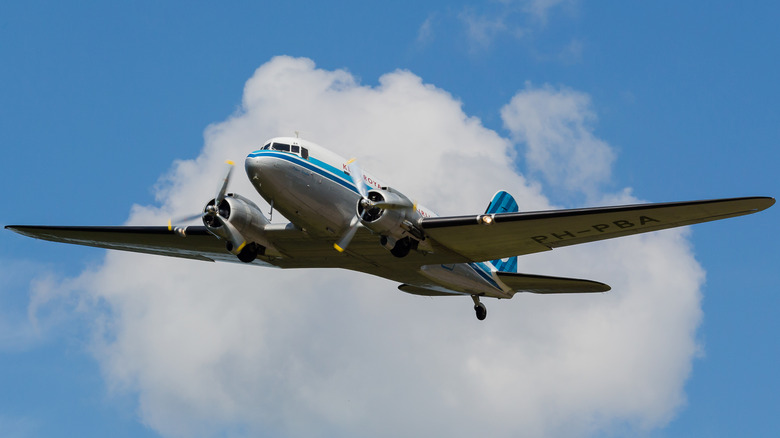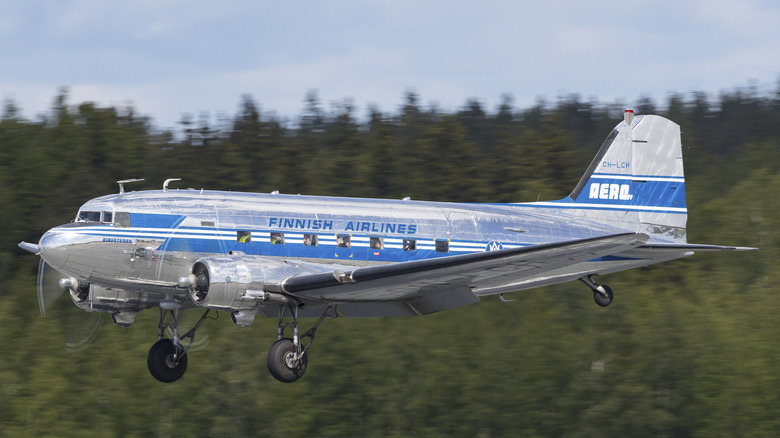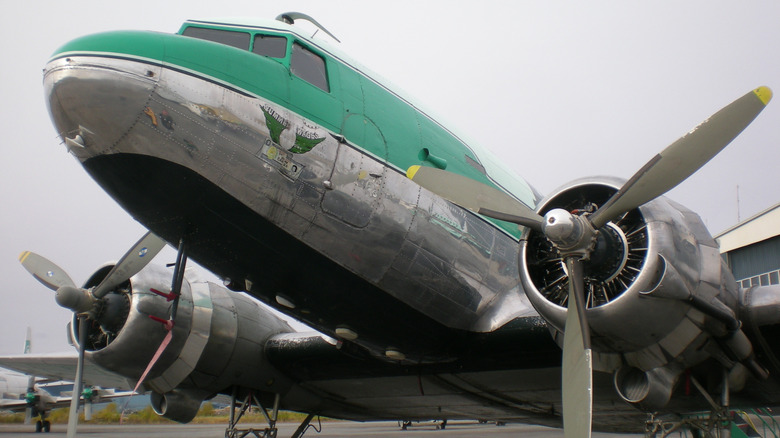The Most Produced Commercial Airliner Isn't The Boeing 737 Or The Airbus A320 (And It Still Flies Today)
When considering the success of commercial aircraft, one important metric that can be used to quantify the argument is production numbers. In this context, there are really two big players that spring to mind — Boeing and Airbus. More specifically, the similar-looking Boeing 737 and Airbus A320 models. These narrow-bodied aircraft are the workhorses of modern aviation. Both boast considerable production numbers, with nearly 12,000 737s having been built as of 2024, with Airbus delivering 11,524 planes as of June 2024. But neither of these aircraft is the most produced of all time.
That title belongs to the Douglas DC-3, which first flew in 1935, and in total, there were over 13,000 of the planes built. This stat helps cement the DC-3's place as one of the most influential planes ever built. It could fly from New York to Los Angeles with only three fuel stops (before this, 15 or so stops were considered the norm). It was the plane that kick-started commercial aviation, as witnessed by the fact that in 1940 more than two million Americans took journeys by air. Yet, as it nears its 100th birthday, the old lady of the skies is still flying, and even more remarkably, is still flying commercially. Let's take a look at the most produced commercial plane ever and how it revolutionized air travel.
Douglas DC-3 - The plane that revolutionized air travel
It's fair to say that the DC-3 was a revolutionary plane that transformed aviation. At the time of its launch, the major competition for the DC-3 was the Boeing 247. The Boeing plane was introduced two years before the DC-3. Being first in the air could have given Boeing an advantage in terms of cornering the market. However, such was the success of the DC-3 that by the mid-forties, 275 out of the 300 airline planes operating in the US were DC-3s. The DC-3 was developed from its predecessor, the DC-2. Effectively, the DC-2 was stretched to increase the seating capacity from 14 up to 21 passengers and even 28 in certain configurations. It was powered by two Wright SGR 1820-71 engines that produced 1,200 hp each. These allowed it to cruise along comfortably at 185 mph at 10,000 feet for up to 2,100 miles without refueling.
Comfortably is a word that can also be applied to the passenger experience. Perhaps the best way to sum this up is to recount Orville Wright's reaction when he first saw the aircraft: "They tell me that the plane is so sound-proof that the passengers can talk to each other without shouting." Pilots also loved the aircraft – it was known as simple to land, easy to fly on a single engine, and with superb handling characteristics. However, no one in those early days could have predicted another trait of the aircraft — longevity.
DC-3 - Still flying after all these years
When the first DC-3 took off in 1935, it's unlikely that anyone present would have believed any DC-3 would still be flying over 90 years later. Yet, the DC-3 still takes to the air, not just as a historical curiosity, but as a plane that still earns a living. Pinning down exactly how many are still flying is difficult, but as of 2020, there were believed to be 172 DC-3s still active. Perhaps most famous are the Buffalo Airways DC-3s that feature in the reality television documentary Ice Pilots. At the time of writing, Buffalo Airways listed three DC-3s in its fleet.
Part of what makes the DC-3 so long-lasting is down to solid engineering. With a close eye on the importance of safety, the designers at Douglas over-engineered the plane, which undoubtedly helped with the plane's durability. Additionally, the DC-3 wasn't a pressurized plane, a factor that removed a lot of stress on the airplane. Simplicity of design is also a key to the DC-3's longevity, as noted by Mike Woodley, a UK operator of the plane. Speaking to the Royal Aeronautical Society, he said, "It's a very simple aeroplane — a clockwork aeroplane, basically. It has no hydraulic controls on it."
Clockwork or not, the greatest testament to this plane is that we can still wind it up and watch it fly today, over 90 years on from its maiden flight.


